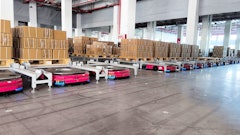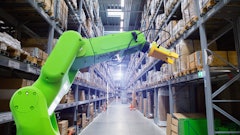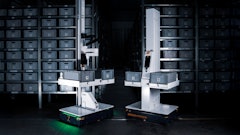
The global robotic picking market is “an emerging market with vast opportunities for growth,” according to the latest report from Interact Analysis. However, long-term forecasts for the industry depict a downward spiral thanks to reduced estimate of full-time equivalent workers (FTEs) performing static manipulation tasks; supply side uncertainty caused by some suppliers facing closures or acquisitions between 2023-2024; and a global slowdown in investment growth across the wider warehouse automation market.
However, prices for robotic picking solutions have remained relatively stable and many companies are embracing collaboration.
“The increasing number of partnerships in the market suggests that companies see collaboration as a means of strengthening their position and this is accelerating the rate of adoption of robotic picking technologies. Case picking has exhibited a faster adoption rate than each picking, reflecting a wider industry trend towards investing in automation for upstream distribution centers which typically handle pallets and cases, rather than downstream fulfillment centers which are more likely to handle eaches,” says Rueben Scriven, Interact Analysis research manager.
Key takeaways:
- The robotic picking market is set to experience rapid growth over the next few years, albeit more constrained than originally predicted. In 2023, annual robotic picking market revenues reached $303 million, with the market expected to grow to $3.3 billion by 2030. This marks a compound annual growth rate (CAGR) of 20% between 2023-2030, while the CAGR for number of units sold is predicted to be 42% over the same period. In 2023, 2,286 units of picking robots were sold globally (excluding Amazon), with this figure forecast to leap to 26,599 (excluding Amazon) by 2030.
- This expansion in sales is largely caused by an increase in labor costs, rapid technological developments on the supplier side, and a steep increase in funding. For instance, robotic picking vendors have secured a total of $2.6 billion in funding just in 2023.
- Reduced customer spending and global uncertainty (caused by high interest rates, China’s economic slowdown and a worldwide slowdown in new warehouse construction) remain key trends for 2025. Customers have been less attracted to Robotics-as-a-service (RaaS) models and have preferred CapEx models, which was signified by a decline in RaaS deployments in 2023.








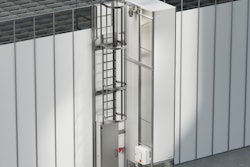
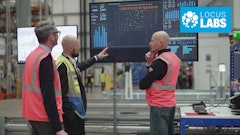





![Pros To Know 2026 [color]](https://img.sdcexec.com/mindful/acbm/workspaces/default/uploads/2025/08/prostoknow-2026-color.mduFvhpgMk.png?ar=16%3A9&auto=format%2Ccompress&bg=fff&fill-color=fff&fit=fill&h=135&q=70&w=240)
